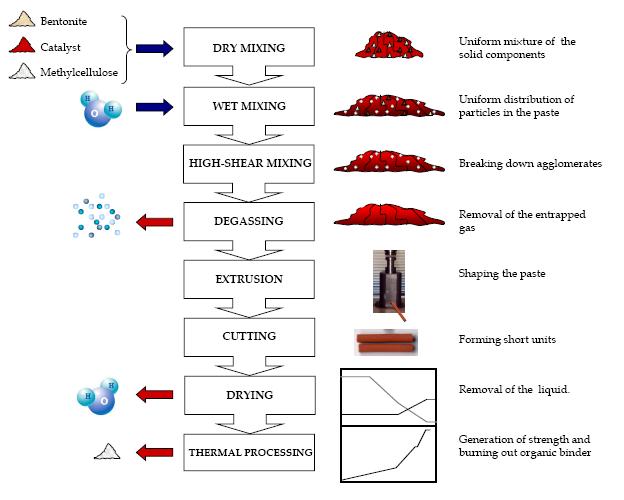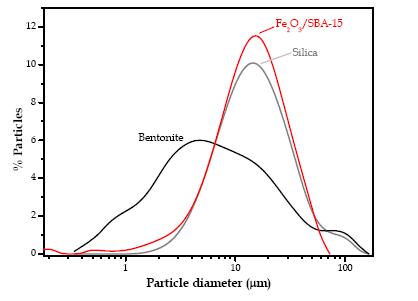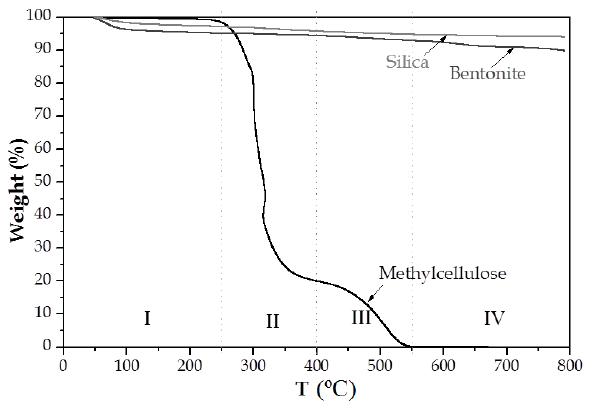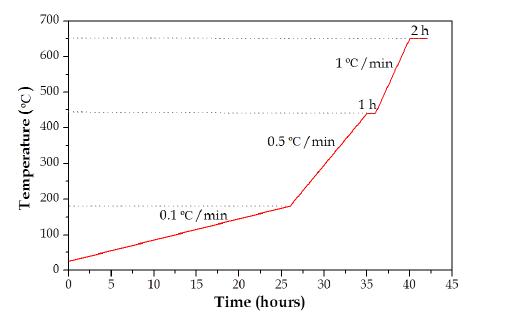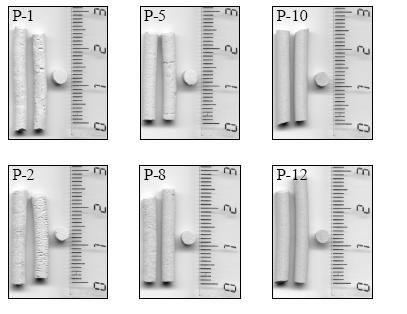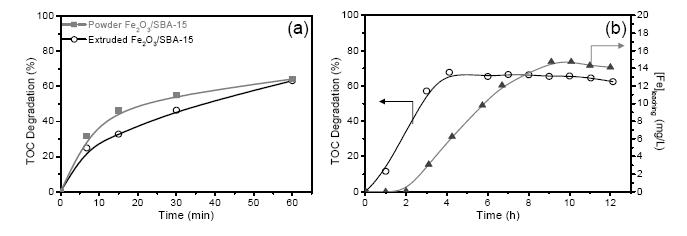1. Introduction
Water treatment for the removal of organic pollutants has become a serious global issue because of the increasing demand for public health awareness and environmental quality. The considerable contamination of the aqueous environment by organic pollutants still requires the development of quick and simple methods for their removal. A common problem in many industries is the disposal of large volumes of wastewater containing major classes of these organic compounds,which are carcinogenic and mutagenic,with high toxicological potentials. Advanced Oxidation Processes (AOP’s) have emerged as interesting alternative for the destruction of organic pollutants in industrial wastewater [1, 2]. These processes involve the generation of non-selective and highly reactive hydroxyl radicals,which are one of the most powerful oxidation agents. The reaction of hydrogen peroxide with ferrous salts (Fenton’s reagent) or other low-valence transition metals (Fenton-like reactions) is a well-known source of hydroxyl radicals at room temperature [3]. The oxidation of organic compounds by means of Fenton-like reactions has been studied in numerous works for the last years [4, 5]. In fact,this technology is used commercially to treat industrial wastewaters [6]. However,this process presents two main drawbacks. Firstly,efficient hydroxyl radical generation due to Fenton-like reactions only occurs in a limited range of pH (2.5‒3.5) and secondly,a final separation of soluble iron species from the treated water is required. These drawbacks have promoted the development of Fenton-like processes based on heterogeneous catalytic systems. In this context,the catalyst design is usually a key factor in order to: i) increase its surface area,ii) minimize the metal sintering,iii) improve its chemical stability and iv) govern the useful lifetime of the catalyst. It has been demonstrated that SBA-15 mesoporous material presents all these properties. Moreover,it is characterized by high hydrothermal stability,pore wall thickness and adjustable pore size [7]. Due to its advantages,a material consisted of a mixed of crystalline iron oxides,principally hematite,supported over a mesoporous SBA-15 silica matrix has been deeply studied for the peroxidation of phenolic [8, 9] and pharmaceutical [10] wastewaters. This novel Fe2O3/SBA-15 mesostructured material has been successfully used as an effective heterogeneous catalyst with a high catalytic activity and low iron leaching for Fenton processes in batch reactors [8, 9, 10].
This novel catalyst in powder form is about 10 µm of diameter. Therefore,it cannot be directly used for industrial applications in fixed bed reactors. Consequently,its particle size needs to be increased prior to its use in commercial reactors in order to avoid a high pressure drop and to achieve high mechanical strength. In general,extruded materials are manufactured with the inclusion of a certain amount of binders which are used to help cement activate catalyst powder together in the paste. The physical strength of the extrudate is affected by the type and quantity of the binders [11].
Despite the existence of several works regarding the extrusion and application of SBA-15 materials [11, 12, 13, 14],the characterization of their structural and textural properties are not studied in these works. Moreover,the mechanical strength of prepared pellets,which is one of the key factors for its possible application in commercial processes,was not investigated in these papers. The aim of this contribution is to evaluate the physico-chemical properties (mechanical strength and BET surface area) of silica pellets with different binder content. The catalytic activity of the Fe2O3/SBA-15 pellets for phenol was assessed by a Fenton-like process.
2. Materials and Method
2.1. Reactives
Tetraethylortosilicate (TEOS) and Pluronic P123,(molecular weight = 5800,EO20PO70EO20),were obtained from Aldrich and used as silica source and non-ionic surfactant,respectively for SBA-15 synthesis. Iron (III) chloride was obtained from Aldrich and used as iron source for Fe2O3/SBA-15 synthesis. Bentonite and methylcellulose were obtained from Süd-Chemie and Aldrich,respectively,and they were used as binders during the extrusion process. Phenol (model pollutant) and hydrogen peroxide (oxidant) in the form of 30 wt% solution were provided by Scharlab.
2.2. Synthesis and extrusion of powder Fe2O3/SBA-15
Iron oxide supported into SBA-15 mesostructured material was prepared by co-condensation of iron (FeCl3·6H2O) and silica (TEOS) sources under acidic conditions and templated with Pluronic 123 as described elsewhere [8]. Figure 1 shows a schematic representation of the extrusion process.
Extruded materials were prepared by blending the powder silica (80-65 wt%) with sodium bentonite (20-35 wt%) and synthetic methylcellulose polymer (2.5-10 wt% over the dry mixture silica-bentonite) which act as binders in the extrusion process [14, 15]. Bentonite was used as inorganic binder in order to increase the mechanical strength of extrudates,whereas methylcellulose (organic binder) was used as plasticizer to enhance the viscosity of the paste during the extrusion. All the components were kneaded until a homogeneous paste was achieved controlling the dosage of deionised water. Thereafter,the paste was placed in a damp atmosphere,which provides the proper plasticity and the cohesive properties to be easily extrudable. Moreover,during this step the paste was degassed for air bubbles which could generate defects in the thermal step. After that,the paste was flown through a 4.8 mm circular die using a home-made ram extruder. The extrusion was carried out by constantly moving the screw manually. In order to prevent a quickly wetness loss and to obtain an uniform drying rate between the surface and internal regions,the green extrudates were placed in a chamber in which the temperature and humidity was controlled within the ranges of 18-40 ºC and 70-10% RH (relative humidity),respectively. The final pellets were obtained by crushing and sieving the extruded material until particle sizes ranging from 1.0 to 1.6 mm which were suitable for packed-bed reactors.
2.3. Characterization techniques
The size distribution of the particles was measured using a Malvern Mastersizer S laser scattering particle size analyser (Malvern Instruments) that employs a 5 mW He-Ne laser with a wavelength of 632.8 nm as a light source. The samples were diluted in ultrapure water and sonicated for 3 min before analysis. The diffracted light beam reaches the detector at angles that depend on the wavelength of the light source and the particle diameter as well as the optical properties of fluid and particle. Taking into account that the diffraction angle is inversely proportional to the particle size,the particle diameter was calculated as a sphere that gives the same diffraction as the actual particle does. Measurements were taken covering the interval of sizes 0.1-200 μm. N2 adsorption/desorption isotherms were recorded at 77 K in a Micromeritics Tristar manometric porosimeter (Micrometrics Tristar 3000). The specific surface areas were calculated using the B.E.T. method [16],whereas the pore size distributions were determined by the application of the B.J.H. method [17] to the adsorption branch of the isotherm using a Harkins-Jura equation for the adsorbed multilayer thickness specially obtained for SBA-15-type materials. The ordering of the mesostructured materials as well as the presence of hematite as active phase were evaluated by means of XRD analysis performed in a Philips X’pert diffractometer using the Cu Kα line. The diffraction patterns were collected in the range from 0.5º to 5.0º (2θ) using a step size of 0.02º for low angle analysis (ordering of the materials) and in the range from 5.0º to 50º with a step size of 0.04º for high angle analysis (hematite). Thermogravimetric analyses were carried out on a SDT simultaneous 2960 microscale analyser from TA Instruments. The iron mass composition of the catalysts was determined by induction coupled plasma emission spectroscopy (Varian Vista AX CCD Simultaneous ICP-AES). In order to dissolve the solid catalyst,the samples were digested with aqueous hydrofluoric acid and diluted to 250 mL in a calibrated flask. Standard solution of iron (1000 mg/L) was used for the calibration of the equipment.
The flexural strength of the specimens was determined in air by three points bending test in an Alliance RT/5 MTR testing machine. The failure probability was analysed following the ASTM guidelines C1161 [18]. According to the standard,the strength data for a given material condition was ranked in ascending order and each specimen was assigned a ranked cumulative probability of failure according to equation 1.
where i represent the ranking of the specimen according to its fracture strength and N is the total number of specimens,which was 10 for each case. From the experimental Pf(s) values,the cumulative failure probability for each material condition was fitted by a Weibull distribution as shown in equation 2.
where s is the fracture strength,sq is the Weibull characteristic strength and m is the Weibull modulus. The analysis method to adjust Pf(s) Weibull distribution to a set of fracture data was based on the maximum likelihood technique [19].
2.4. Catalytic studies
Batch heterogeneous Fenton experiments for the removal of phenol as model pollutant of wastewaters were carried out in a 100 mL glass autoclave reactor (75 mL of actual reaction volume) under continuous mechanical stirring (350 rpm) in contact with air. Typically,the appropriate amount of catalyst suspended in water (0.6 g/L),was placed into the glass reactor [9]. Afterwards,the system was pressurised up to 0.6 MPa with air and heated to the selected temperature (80 ºC). Once the temperature was achieved,the required amounts of phenol (1.0 g/L) and hydrogen peroxide (5.1 g/L,which corresponds with the stoichiometric amount for the total mineralization of phenol) were added into the reactor [8],and this moment was set as zero-reaction time.
Continuous experiments were conducted in an up-flow Fixed Bed Reactor (FBR) working under atmospheric pressure. The FBR consisted of a jacketed glassware tube of 1.2 cm of inner diameter and 15 cm of length. A catalyst mass (wcat) of 2.9 g with a particle size diameter between 1.0-1.6 mm was placed in the catalytic packed bed between two beds of spherical inert glass particles. Typically,the feed aqueous solution of phenol (1 g/L) and hydrogen peroxide (5.1 g/L,stoichiometric amount for the complete mineralization of phenol) was fed to the reactor using a GILSON 10SC high performance liquid chromatography (HPLC) pump capable of volumetric flow rates up to 10 cm3/min with high precision. The temperature of the system on the upper part of the bed was controlled at 80 ºC using an external recirculating heating bath with a stream of silicon oil through the jacket of the glass reactor. Time zero was considered when the feed flow reached the top of the catalytic bed. The residence time for the liquid phase in the packed bed reactor was 3.6 minutes that corresponds with a volumetric flow rate of 1 cm3/min [12].
Aliquots were withdrawn during the reaction course and filtered by means of 0.22 μm nylon membranes before being analyzed. Total Organic Carbon (TOC) content of the samples was analyzed using a combustion/non dispersive infrared gas analyzer model TOC-V Shimadzu,and iron leaching was determined by ICP-AES.
3. Results and Discussion
As the extrusion process needs large amounts of the material to be extruded,the optimization of the extrusion process was initially carried out using a commercial powder silica instead of the Fe2O3/SBA-15 catalyst. In a first step,several silica materials were evaluated in order to achieve a material with similar particle size to the Fe2O3/SBA-15 catalyst. With the selected commercial powder silica material,several variables such as the calcination temperature programme and the contents of bentonite and methylcellulose as inorganic and organic binders,respectively,were studied. The optimized extrusion conditions were finally used for Fe2O3/SBA-15 catalyst and its catalytic performance was assessed on the phenol oxidation by a Fenton-like process.
3.1. Influence of the particle size and the calcination temperature programme
The particle size of the silica substitute material should be similar to the Fe2O3/SBA-15 catalyst,in order to have a similar behavior during the extrusion process. The particle size distribution is also important due to the fact that it could affect to the required liquid for obtaining an extrudable paste [20]. Figure 2 shows the particle size distribution of the components (silica,bentonite and Fe2O3/SBA-15 catalyst). First of all,it can be seen that the particle size distributions were not very wide,therefore the extrusion process would be performed without any difficulties. If bigger particles were used,a big amount of water would be used in order to fill the extraparticular porosity. Moreover,the mesoporous catalyst had a homogeneous distribution and very similar to the commercial silica material. Thus,the substitution of the catalyst with the silica material seems to be reasonable.
Another important factor in the quality of the final properties of the extrudates,in particular the final mechanical resistance,is the drying and calcination temperatures. Thermal processing can cause structural changes to the catalyst as well as deformation and cracking of the extrudates. Termogravimetric analysis (TGA) were used to determine the temperature programme in the final calcination step of the extrusion process,taking into account the thermal desorption or decomposition of the pure components used in the extrusion method. The TGA profiles of the components (Figure 3) evidenced typical weight losses around 100 ºC for water desorption for silica and bentonite,and 300‒550 ºC for the thermal decomposition of methylcellulose. Thus,the influence of the calcination temperature on the specific surface area of extrudates was studied from 550 ºC to 750 ºC using 25 wt% of bentonite and 5 wt% of methylcellulose (Table 1).
Table 1. BET surface area of the extrudates at different calcination conditions.
| Calcination Temperature (ºC) | Calcination time (hours) | SBET (m2/g) |
| 550 | 2 | 144 |
| 650 | 2 | 127 |
| 650 | 1 | 139 |
| 750 | 0.5 | 95 |
The increase of the calcination temperature as well as the calcination time produced a decrease of the surface area. In order to guarantee the removal of the organic binder and the sintering of the inorganic binder with a low reduction of the specific surface area,the selected final temperature for the thermal processing was 2 hours at 650 ºC.
A schematic view of the calcination temperature programme is depicted in Figure 4. This temperature profile programme was selected in order to remove gradually and slowly the water and the organic content from the extrudate without creating defects. It started with a very slow ramp (0.1 ºC/min) from 25 to 180 ºC to remove the water content,which could correspond to the first segment indicated in Figure 3. It was followed by a second ramp (0.5 ºC/min) until 440 ºC with 1 h at that temperature to burn off the 80 % of the organic content (segment II,Figure 3). Finally,a ramp (1.0 ºC/min) until 650 ºC for 2 hours was performed to achieve the complete removal of the methylcellulose content (segment III,Figure 3) and to promote the sintering of the binder and the silica material for enhancing the strength of the extrudates once the organic binder has been removed (segment IV,Figure 3) [21].
3.2. Influence of binders content on the extrusion process
The proportion of the binding agents in the extrusion process of the commercial silica material was studied as crucial points in the mechanical strength of the final extruded particles. Thus,a high proportion of binding agent would provide high mechanical resistance but the catalytic behaviour of the final material might be significantly reduced because of the dilution of active catalytic phase by the silica matrix. The contents of the binding agents were varied between 20 and 35 wt% for bentonite in the silica/bentonite mixture and 2.5 and 10 wt% for the methylcellulose with respect to the inorganic content (silica + bentonite). The materials were prepared by the extrusion method shown in Figure 1.
The content of the silica,bentonite,methylcellulose and water of the paste for the extrusion process as well as the final properties of the extruded materials,such as the mechanical strength and the specific surface area,of all the prepared samples are summarized in Table 2. The addition of water to the mixture was a crucial step in the extrusion process. Too much water content made the paste watery and it collapsed at the edge of the die,decreasing the quality of extrudates and the resistance in the intermediate and final product [22]. On the other hand,insufficient water content led to improper mixing and caused high shear stress and difficulty in the extrusion process,forming cracks on the material surface [23]. The optimum water content was experimentally determined by trial and error and it is shown in Table 2. It can be seen the water amount was dependent on the paste composition,in particular on the methylcellulose amount. As the organic binder content increased,the water required for an optimum extrusion decreased,due to fact that the methylcellulose acts as lubricant,requiring lower amount of water when it is presented on the mixture.
Table 2. Influence of the binder composition on the textural and mechanical properties of the resultant extruded materials.
| Sample | SiO2 (wt%) | Bentonite (wt%) | Methylcellulose (wt%)(a) | Water (wt%)(b) | SBET (m2/g) | σR range (MPa) |
| P-1 | 80 | 20 | 2.5 | 299 | 107 | 0.54-1.05 |
| P-2 | 75 | 25 | 2.5 | 300 | 120 | 0.38-0.73 |
| P-3 | 70 | 30 | 2.5 | 300 | 110 | 0.46-0.71 |
| P-4 | 65 | 35 | 2.5 | 301 | 114 | 0.47-0.67 |
| P-5 | 80 | 20 | 5 | 270 | 109 | 0.73-1.32 |
| P-6 | 75 | 25 | 5 | 269 | 107 | 0.49-1.02 |
| P-7 | 70 | 30 | 5 | 270 | 101 | 0.84-1.34 |
| P-8 | 65 | 35 | 5 | 268 | 88 | 0.70-1.30 |
| P-9 | 80 | 20 | 10 | 229 | 98 | 1.16-2.23 |
| P-10 | 75 | 25 | 10 | 230 | 94 | 1.74-2.43 |
| P-11 | 70 | 30 | 10 | 230 | 99 | 1.38-2.28 |
| P-12 | 65 | 35 | 10 | 230 | 96 | 1.22-2.32 |
(a) Weight of organic binder/total weight of inorganic material (silica + bentonite) × 100
(b) Weight of water/total weight of inorganic material (silica + bentonite) × 100 |
Figure 5 shows several photographs of the extrudates prepared with different organic and inorganic binders’ content. Photographs of samples P-1 and P-2 correspond to extruded materials prepared with a methylcellulose content of 2.5 wt%. These samples showed pellets with a lot of defects and cracks,because the pastes were extremely dry due to liquid migration and low paste plasticity. When the bentonite content increased (P-2),the pastes acquired more plasticity and the liquid migration decreased,but it was not enough and the superficial cracks still appeared in the material,as shown in the photograph. These defects produced extrudates with lower strength values as shown in Table 2.
When methylcellulose amount was increased up,the extrusion was easier,the pastes were more plastic and resistant,the extrudates evidenced lower defects (Figure 5,P-5 and P-8),and the average mechanical strength increased from 0.72 to 0.92 MPa as the methylcellulose increased from 2.5 wt% to 5 wt% in the paste composition. This is due to the fact that the viscosity improved,maintaining an uniform distribution of ingredients through the paste. Furthermore,the increase of plasticity (higher inorganic binder content) enhanced the smooth texture of the paste,as can be seen in P-8,although the surface was still very rough.
The extrusion process was further improved by enhancing the viscosity of the paste by increasing the methylcellulose content [11]. When methylcellulose content was increased up to 10 wt%,liquid migration was not produced,and extrusion process was performed gradually,without cracks and defects (Figure 5,P-10 and P-12 samples). The extruded materials showed smother crack-free surfaces with higher average mechanical strength (ca. 1.80 MPa). The only drawback was that pellets warped during the drying step,as the high methylcellulose content caused water retention,tampering a gradual evaporation,and piece contraction was favoured. This fact could be a problem for the preparation of long pellets or monolithic structures (not in the studied case),although if the pellets were longer the drying rate could be also reduced.
It can be seen that as the methylcellulose content increased the surface area decreased (Table 2). This fact could be caused by the formation of hot spots inside the pellets which produce the material sintering,and therefore the decrease of the BET surface area. This phenomenon has been studied by others authors in the preparation of extruded ceramic materials [24],where they showed that organic binder favoured the compacting of the solid particles in the final material,causing the decreased of the mesopores but also increased the mechanical resistance. Therefore,it is required to find a compromise between the mechanical strength and the textural property of the specific surface area depending on the targeted applications [11]. On contrary to other studies [11, 14],the bentonite content hardly influenced the mechanical strength and the extruded materials. As the silica loading in the extruded material is also priority objective in order to have more active sites,the optimum inorganic binder content was set to 25 wt%.
Considering these results,the extruded pellets using pastes with a 10 wt% of organic binder (methylcellulose) and 25 wt% of inorganic binder (bentonite) displayed the best composition for the agglomeration process,due to the high resistance (Table 2) and the presence of no defects on the resultant extruded materials (Figure 5,P-10 and P-12). Pastes with more than 10 wt% of cellulose were too elastic,and this caused deformation by expansion of the extruded rods or liquid migration during extrusion (data not shown).
3.3. Fe2O3/SBA-15 extrusion and characterization
The optimum composition (75 wt% catalyst,25 wt% bentonite and 10 wt% methylcellulose) was used for the extrusion of the mesoporous catalyst Fe2O3/SBA-15 following the same experimental procedure that was used for the commercial silica matrix (Figure 1). Figure 6 shows a photograph of typical bars obtained from the ram extruder before crushing and sieving. It can be seen that the extruded Fe2O3/SBA-15 was similar than the extruded silica with the same composition (Figure 4,P-10),without cracks and defects. Thus,it can be attested that the extrusion method described in the experimental section and optimized for a silica powder provided a successful extrusion of the Fe2O3/SBA-15 catalyst.
Table 3 depicts the physicochemical properties of the Fe2O3/SBA-15 materials in both powder and extruded forms. The extruded material exhibit similar physicochemical properties to those shown by the starting mesostructured powder material,although it must be noted that the strength of the extruded Fe2O3/SBA-15 catalyst was lower than that obtained for the extruded silica with the same composition (P-10,Table 2). This fact is probably due to the higher specific BET surface area of Fe2O3/SBA-15 material.
Table 3. Physicochemical properties of the Fe2O3/SBA-15 materials.
| | Particle size (µm) | SBET (m2/g) | Pore diameter (nm) | Iron content (wt%) | s (MPa) |
| Powder Fe2O3/SBA-15 | 14.4 | 495 | 7.9 | 19 | ‒ |
| Extruded Fe2O3/SBA-15 | 1000‒1600 | 264 | 8.1 | 14 | 1.34-2.27 |
Figure 7 shows the characterization of powder and extruded Fe2O3/ SBA-15 catalysts. Figure 7a shows the X-ray diffraction patterns (XRD) of powder and extruded mesoporous catalysts,and it can be seen that both powder and extruded Fe2O3/SBA-15 showed XRD patterns with three well-resolved sharp diffraction peaks which were indexed to (1 0 0),(1 1 0) and (2 0 0) reflections,indicating the persistence of hexagonal space group p6mm,typical of the mesoscopic order of SBA-15 silica materials. Moreover,the presence of hematite was also preserved,as can be seen in Figure 7b. However,it is interesting to note that intensities of the extruded materials decreased compared to the parent powder,probably due to the presence of bentonite as binder between Fe2O3/SBA-15 particles.
Powder and extruded samples exhibited type IV adsorption isotherm with H1 hysteresis loop (Figure 7c),as defined by IUPAC which revealed a narrow pore sizes distribution. Nitrogen adsorption isotherm of extruded Fe2O3/SBA-15 showed a reduction in the capillary condensation due to the pore filling with binder molecules in the mesoporous catalysts. Moreover,typical distribution of pore diameter -centered at ca. 8 nm- was also shown in the extruded materials (Figure 7d). However,as 25 wt% of bentonite as inorganic binder was necessary to perform the extrusion,other features such as,iron content and BET surface area were slightly decreased. The reduction of a 47% of the specific surface area,it is not only due to the presence of bentonite particles with lower surface area,but also due to the partial collapse of the porous structure mediated by sintering process.
3.4. Catalytic test
The extruded catalyst was applied in a Fenton-like process to mineralize the phenol content in an aqueous solution. It can be seen in Figure 8a that the TOC degradation rate for the extruded material was slower than that obtained for the powder sample. The TOC conversion was 32 % for the extruded catalyst as compared to 46 % for the powder sample at 15 minutes of reaction time. Nevertheless,both of them reached similar values at the end of the reaction (60 % of mineralization in 60 minutes of reaction time). The decrease in the reaction rate can be explained by the combination of two factors. Firstly,the same weight of catalyst was used for the catalytic experiments with powder catalyst (binder-free) and extruded catalyst. Consequently,lower active sites were presented in the extruded catalyst as it has been mixed with bentonite (25 wt%). Secondly,the diffusion of substrate and product molecules in the course of the catalytic reaction may be hindered due to the blockage of the pores by binder particles,whereas,in the experiment with powder catalyst the internal diffusion resistances were negligible due to the low average particle size of the powder Fe2O3/SBA-15 (Figure 2). The results reported by Topka et al. [25] using an extruded material based on Al-SBA-15 for the Friedel-Crafts alkylation of toluene with benzyl alcohol evidenced a reaction time five times lower than that obtained for the powder catalyst to achieve the 50 % conversion of benzyl alcohol.
Regarding to the stability of the catalyst,lower values of iron leaching were obtained for the extruded catalyst (6 mg/L and 7.3% of the total iron) compared with the powder sample (8.8 mg/L and 11.8% of the total iron). These results seem to indicate a plausible stabilization of the iron species supported in the Fe2O3/SBA-15 as a consequence of the sintering process that take place in the calcination of the extruded material in presence of the inorganic and organic binders.
Figure 8b shows TOC degradation and iron leaching in a catalytic test performed in a fixed bed reactor. It is shown that similar TOC degradation were obtained in both batch,and continuous processes of ca. 60%. Nevertheless,it is evident that the catalyst-bed needs an induction period of time before a remarkable change of TOC can be observed. With regard to the catalyst stability,values of ca. 14 mg/L of iron leaching was obtained at the steady-state,due to the higher amount of catalyst used in the process.
4. Conclusion
Fe2O3/SBA-15 extruded materials were prepared using bentonite and methylcellulose as binders. A linear increase of the mechanical strength was observed as the methylcellulose content increased. A 25 wt% of bentonite and a 10 wt% of methylcellulose were required to form pellets without defects,high mechanical strength and high specific surface area. The physical properties of the Fe2O3/SBA-15 extrudates were affected by the binder inclusion,the surface area and iron content decreased,whereas the mesoporous structure of the Fe2O3/SBA-15 was well-preserved. TOC degradation rate for the powder material was higher than that obtained for the extruded one. Nevertheless,the same TOC conversion was obtained at final reaction time. The preliminary catalytic test reaction revealed that the extruded Fe2O3/SBA-15 was a suitable catalyst for continuous applications in Fenton-like processes in fixed bed reactors.
Acknowledgments
Financial support of Regional Government of Madrid provided through project REMTAVARES S2013/MAE-2716 and the European Social Fund are acknowledged.
Conflict of interest
All authorsdeclare no conflict of interest in this paper.










 DownLoad:
DownLoad: 







